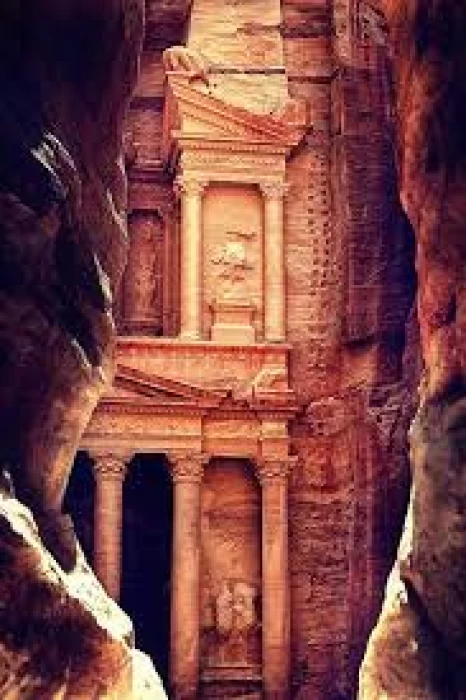
Petra | The Rose Red City
The Rose Red City
The capital of Jordan, Amman, is located 240 kilometers to the south of the historic city of Petra, while Aqaba, the Red Sea City, is 120 kilometers to the north. It is among the world's most well-known archeological sites. Travelers from various areas flock to Petra, World wonders which stands as the greatest treasure and appropriate tourist attraction for people coming for pleasure.
Historical records do not indicate with exactitude when Petra was established; however, it became prosperous during the time it served as the capital of Nabataean Empire around the first century BC, whose wealth stemmed from trade in frankincense, myrrh and spices. Later on, this city got enveloped within outlined boundaries by Roman Empire but still grew at a steady pace until an extensive earthquake occurred in 363 AD leaving behind quite a huge number of ruins from around 200s AD.
The origin of the name Petra is Greek and means rock, and the Greek historian Strabo described it as being located on flat and level land, but protected on all sides by rocky mountains that are dry on the outside and abundant with springs on the inside.
History links it to the Nabataeans because they were the first to reside there longer than others, and they created their own models of building, sculpture, stone decoration and refinement, as well as pottery. They were the masters of trade in the ancient world from the first century BC until the beginning of the second century AD.
Petra reached the height of its prosperity during their reign despite its submission to Roman control in 106 AD, where the Romans reorganized it by creating a main street surrounded by columns on both sides, and destroying the rival city to the north. The Nabataean style can be seen in the carving of the seats in the rock, the Greek style in the location of the theater on a slope deep in the mountain, and the Roman style in the semi-circular shape of the theater.
Tower tombs are represented by the facade of a tower carved into the rock and may have several tiers. There is a pattern in the form of a façade topped by four obelisks with two obelisks on each side like an obelisk mausoleum, which some liken to the Temple of Ramses II (Abu Simbel Temple) in Egypt. It dates back to the first half of the first century AD.
Of particular interest is an unsculpted palace deep in the rocky mountains called Qasr al-Bint. In front of the temple's courtyard is an altar dedicated to sacrifices, and the temple includes the Holy of Holies in the main chamber, which houses the statue of the god Dushara. In addition to churches with mosaic floors and other monuments.














